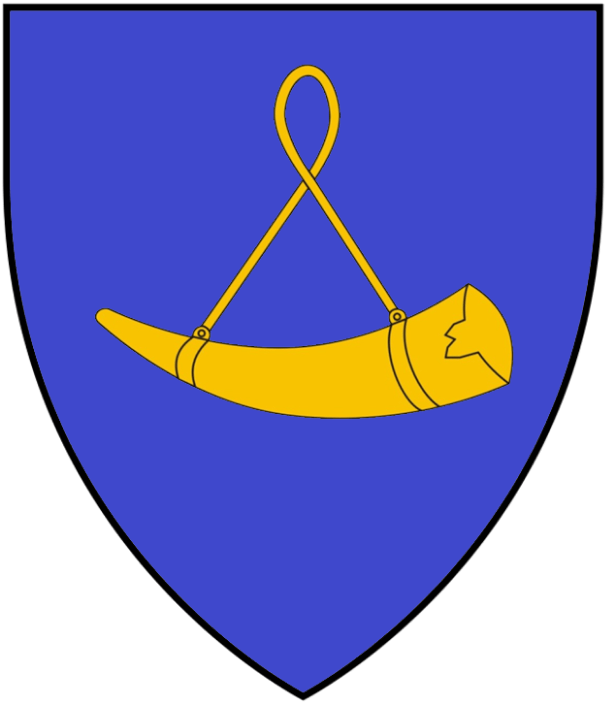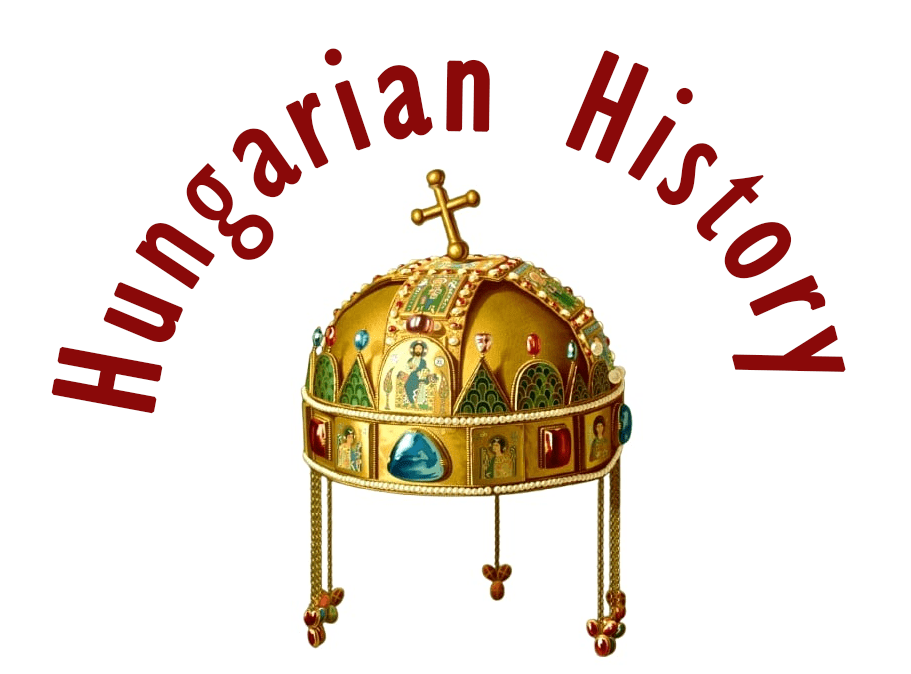Today, on 6 May, we commemorate the Day of Jász Liberty…

The Jász, originally an Iranian-speaking ethnic group, were part of the alliance called the Alans. These tribes, considered to be Indo-Iranian-speaking, once belonged to the Scythian group of peoples, the Saka.
The name of their alliance was recorded according to the Greek hearing. The Ossetians living in the Caucasus today are relatives of the Jász. They were and are called Ossetians (Ossetian: “Oszok/osok”) by the neighboring peoples, since they were once vassals of the Asiks. However, their self-name is “iron”.

The Jász people settled in Hungary in the area of Jászság, named after them. The “iron” groups that joined them made their home around Pilisjászfalu and Esztergom. They were probably part of the king’s immediate entourage. The Jász people were organized into Seats, and captains were elected. Their chief magistrate was the Palatine. The organisational framework of the Jász inhabitants living in a block was Berényszék, but they also had scattered settlements in the country.

The Cumans and the Jász people had territorial autonomy already in the Middle Ages in Hungary because one group of the Jász settled in Hungary with the Cumans in the middle of the 13th century, but the process of their immigration only ended in the 14th century. According to Hungarian scholars, their language was changed to Hungarian by the 16th century, but they preserved their ethnic identity.

The history of the Cumans and their settlement on the territory of the Kingdom of Hungary is well known: it is mainly linked to the Tatar invasion and the second founding of the Kingdom by Béla IV. However, the settlement of the Jász in Hungary is a controversial issue in historiography.
It is a remarkable and somewhat puzzling fact that the ancient Greco-Roman sources mention a group of people called the Iazyges as the inhabitants of the Danube-Tisza area. The Jász are certainly mentioned in the documents of the 14th century. The majority of the Jász people practised their faith according to the rites of Eastern (Byzantine) Christianity. This is shown by their burial customs, the way their dead had their hands clasped together under their chins, and the Byzantine cross on their rings.

The earliest mention of the Jász people in Hungary, whose name appeared as Jasso, goes back to the year 1245. In 1318, they were mentioned as Jazonicus in the register of the Chapter of Gyulafehérvár. In the charter of privilege of King Károly Róbert in 1323, they are mentioned as Jasones. Of the 18 lords of Jász listed in the charter, 11 were Christian and 7 pagan, although the fathers of none of the representatives of this group bore Christian names. The pagan names are considered to be of Alanian or ‘Ossetian’ origin, and some of them are thought to be of Turkish or Cuman origin.

The community of the Cumans and the Jász was also in a constant state of flux in the Middle Ages. In the 14th century, the conversion of the Cumans to Christianity was completed, as evidenced by the disappearance of horses and harnesses from their graves and the presence of cemeteries around churches.

By the 15th century, as a result of the gradual mixing with the Hungarian population, the Cumans and the Jász also largely abandoned their original language and spoke Hungarian. In any case, both the Cumans and the Jász retained their sense of separateness, together with their privileges. Their territories were owned by the Holy Crown, they were not subject to the jurisdiction of landlords, and their chief magistrate was the Palatine, who usually appeared as the defender of the rights of the Cumans and the Jász.

The only known written record in Hungary of the language attributed to the Jász people (actually Iron, or Ossetian languages) is a glossary written on the back of a document dated 1422. This important document is decisive proof of the Indo-Iranian affinity of the Ossetian language. At the same time, it is indisputable proof that the Iron people also arrived in the land of the Hungarians with the Jász people.

The Jász people preserved their ethnic identity until the time of King Matthias, when, in 1474, the Franciscans were granted the right to convert them and to build churches and monasteries in Jászberény.
The Turkish conquest also brought drastic changes in the history of Kunság and Jászság regions. During the 16th century, the flat lowland areas, which were difficult to defend, quickly fell into Turkish hands, and the population rapidly dwindled. This is when the names Kiskunság and Nagykunság were coined, reflecting the population situation: the latter, formerly known as Kolbász-szék, was less damaged and more important than the former, known as Kecskemét-szék, which became Kiskunság.

Migration was a common phenomenon even during the turbulent Turkish period: The composition of Halas village, for example, was determined by the Reformed population of Baranya County origin settling in the 1620s. An important peculiarity of the Turkish period is that the vast majority of the population of the Nagykunság Region became Reformed, while the majority of the population of the Jászság Region became Catholic.
The expulsion of the Turks was a most stressful time: during this period, Crimean Tatar armies ravaged the region four times (!) (1683, 1684, 1691, 1697). During the Tatar invasion of 1697, 800 people were driven from Karcag alone to the areas under Turkish rule. The situation was exacerbated by the raids of the Rákóczi War of Independence, when the prince had to relocate almost the entire population of Nagykunság to the Rakamaz region in 1705.

The Jászság region suffered greatly under Turkish rule, but it was not depopulated. When the resettlement of the lowlands began after the Turkish occupation, many places were settled by the Jász people. The majority of the Jász settled in the Kiskunság region between the Danube and the Tisza. The Catholic population of the Kiskunság is largely of Jász origin.
From 1696, the independent administrative and judicial rights of the Jászkun, which had existed from the beginning, were extended by the introduction of an independent taxation similar to that of the Cumans, thus creating the conditions for the political unity of the Jászkun district; a jurisdiction was established. After this time, the Jászság region was, until 1876, a part of the Jászkun district as an administrative unit not under the county authority.

But let us go back to the end of the Ottoman period. After the end of the War of Reconquest and the outbreak of the War of the Spanish Succession, Emperor Leopold I was naturally short of money. It was in this situation that he decided to sell the privileged districts of the Jász and of the Cumans, which he regarded as new acquisitions. The buyer was the Teutonic Knights, and not for a small sum: the Grand Master, Franz Ludwig von Pfalz-Neuburg (1664-1732), exchanged the property for the sum of 500,000 gold florins of the Rhineland on 22 March 1702.
The decision provoked opposition not only from the privileged residents of the village but also from many others in Hungary. The basis of the protest was that the monarch could not sell crown land without the consent of the Diet. The decision was opposed even by the royalist Palatine Esterházy Pál. By decree of 27 October 1703 in Tokaj, Prince Rákóczi Ferenc II declared the property rights of the Teutonic Knights null and void, so it is no wonder that the Jászkuns were among the great prince’s devoted supporters.

After the end of the Rákóczi War of Independence, the issue of Jászkunság was included in the 1711 Peace of Szatmár. In point 5, a promise was made to redress the grievances. At the 1715 Diet, the nobility argued for autonomy, and serious negotiations were held. Shortly afterwards, the idea of redemption, or redemptio, was born: the Jászkuns proposed to pay back half of the purchase price themselves, instead of the ultimately reluctant nobility. The possession of the Teutonic Knights also led to conflicts with another player: the diocese of Eger, where issues of the canonry led to conflicts, especially over the appointment of priests.
In the years following the Rákóczi War of Independence, the population grew rapidly thanks to natural increase and strong immigration. The economic strengthening that accompanied the population growth was accompanied by an increased need for redemption. The political efforts slowly led to results, which were reflected in a change of ownership: in 1731, the House of Invalides of Pest bought the Jászkunság from the Teutonic Knights. This essentially put the Three Districts in the possession of a government-controlled body.

Another important change was that the House of Invalides no longer owned the area as property, but as a pledge. The Invalides House was built for servicemen and invalids from 1716 onwards, and received its first residents in 1729. Its foundation was established by the Archbishop of Esztergom, Széchényi György, in 1692. The Invalidus House is still standing today and is the seat of the Municipality of Budapest. However, the authority of the Invalidus House was not a relief: the rent and the war tax were collected by the soldiers themselves, who were not exactly known for their delicacy.
The decisive turning point for the region came with another armed conflict, the War of the Austrian Succession. On 24 December 1744, during the Second Silesian War, the captains of the Jászkun districts, putting aside religious differences, jointly petitioned the Governor’s Council for the restoration of their privileges. The representative of the Nagykun District was Varró István, who is considered to be the last person to know the Cuman language. It was at this time that he dictated the text of the Cuman Lord’s Prayer to Kollár Ádám Ferenc, a historian who also studied Oriental languages, in Vienna.

The Jászkuns’ undertaking was to pay 500,000 Rhenish gold florins and interest – a total of 575,900 Rhenish gold florins – and to issue a thousand more mounted soldiers in addition to the 400 horsemen already equipped for the insurrection, the noble uprising, in 1741. From the latter, the Jászkun redemptionist hussar regiment was organised. On 6 May 1745, Maria Theresa signed the charter of privilege of redemption.
The deadline for payment was 24 June 1745, which was finally settled by the end of July. Typically, three-quarters of the redemption money presented at this time was from loans. Although an effort was made to distribute the money equally and proportionately among the Three Districts – and within them in proportion to the wealth they had inherited – the repayment of the loans was a heavy burden. On 8 November 1745, a decree from the nobility had to be issued to encourage the Small Cumans (Kiskunok), citing the example of the old Romans, who were prepared to do anything for their freedom. The three district seats, Halas, Karcag, and Jászberény, contributed the largest sums to the redemption. Many inhabitants of the latter even moved away because of the burden.

Despite the burdens, the redemption was a proud, identity-forming event, which was proclaimed with great ceremony everywhere. Those who contributed to the redemption acquired property in proportion to their payments and benefited from the use of common pastures. On payment of a certain amount, a person became a full redemptioner; those who could not meet the prescribed limit became irredemptus. Personal freedom was granted to all residents of the Three Districts, even those who were insolvent.
The redemption and reparation resulted in a new legal order, a new social order. The “redemptus”, the holder of the freedom of the Jászkun, was freed from the dependence of the landlord and gained free peasant status.
From then on, redemptus was the basis for family pride and a place in the community in the Jászkunság. Redemptio gave a further boost to the prosperity of an already developing region. Exemptions, a firm legal status, freedom of enterprise (e.g., the right to hold fairs, taverns, butcher’s shops), and municipal autonomy were all important factors in this. In Jászkunság, a peasant mentality and way of life developed, which was considered ideal by the reformist efforts to liberate the serfs.

In defence of their old privileges and as an expression of their loyalty to the Holy Crown, the Jászkuns performed beyond their strength in the wars of the Habsburg Empire, not only during the reign of Maria Theresa. They were part of the noble invasions and in 1800 they saddled the future Nádor Hussars regiment. They also fought valiantly in the 1848-1849 War of Independence, and alongside the Jászkun Hussar, Jászkun military valour was a legendary concept until the end of the Second World War.
The autonomy of the Three Districts ended with the administrative reform of 1876 and the creation of the counties of Jász-Nagykun-Szolnok and Pest-Pilis-Solt-Kiskun. The Redemptio is still a part of the Jász and Kun consciousness, and according to the resolution of the Hungarian Parliament of 7 February 2014, 6 May is the commemorative day of the Jászkun self-redemption.
Today, they live in the area called the “Jászság”. There are many settlement names in the area with the prefix “Jász”. Their coat of arms is a golden Lehel horn on a blue shield.

Source: Arcanum, Lukács Tamás, and Dr. Hursán Szabolcs (Hungarian Research Institute)
Let me show you a great folk dance from the Jászság region of Hungary, which reminds me of a martial art practice from ancient times:
https://www.youtube.com/watch?v=fQG5vN8MrHQ
Dear Readers, I can only make this content available through small donations or by selling my books or T-shirts.
Please, support me with a coffee here: https://www.buymeacoffee.com/duhoxoxa
You can check out my books on Amazon or Draft2Digital. They are available in hardcover, paperback, or ebook:
https://www.amazon.com/dp/198020490X or at https://books2read.com/b/boYd81

My work can also be followed and supported on Patreon: Become a Patron!http://Become a Patron!
Become a Patron! Donations can be sent by PayPal, too: https://tinyurl.com/yknsvbk7


https://hungarianottomanwars.myspreadshop.com/all
Subscribe to my newsletter here: https://tinyurl.com/4jdjbfkn

